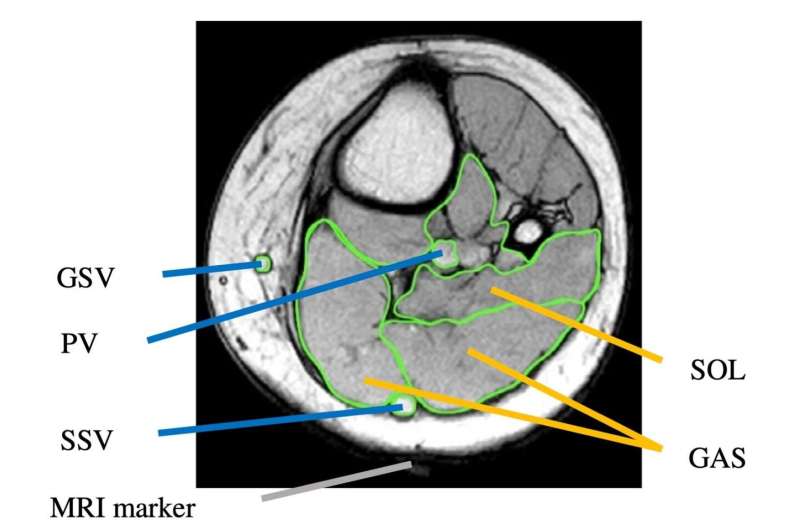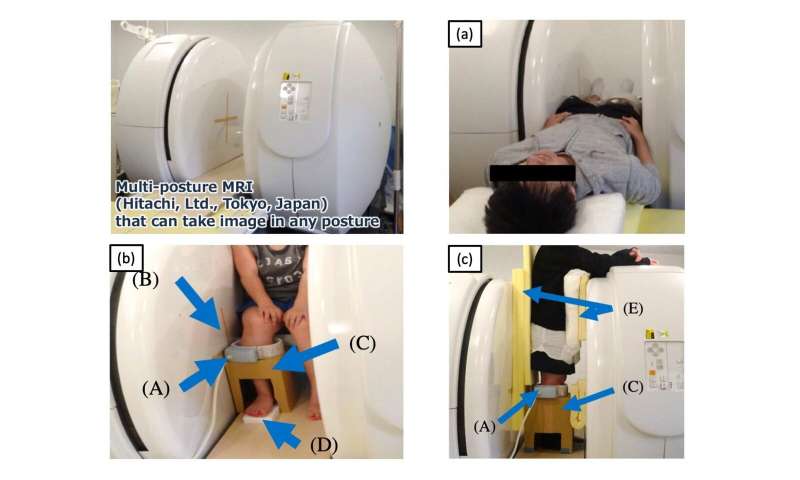Home » Health News »
Leg muscle action assists blood flow independently of age

Chronic lower-limb edema (CLE)—the permanent accumulation of fluid in the leg—often occurs in elderly people. The condition leads to various physical and mental problems, including difficulty in walking or moving, fatigue and anxiety. One cause of CLE is the lack of physical activity, which is associated with a decrease in muscle pump action. The latter refers to the leg muscle’s acting as a blood pump: when contracted, the muscle squeezes veins together, forcing blood to flow. The question whether muscle pump action systematically changes with age has not been thoroughly investigated; now, Junko Sugama from Kanazawa University and colleagues have addressed this issue. In addition, they studied how leg posture affects muscle pump action.
For their study, Sugama and colleagues recruited a total of 76 healthy volunteers in three age categories: young, middle-aged and old, with average ages of 24, 47 and 72 years, respectively. They investigated blood flow in the subjects’ lower legs by means of magnetic resonance imaging (MRI). The latter is a technique enabling visualizing the morphology of muscles and veins at a given position along the leg. The scientists made MRI cross-section images at 21 positions in the calf region; combining the images made it possible to obtain information on blood flow in the leg.
To examine the effect of leg motion, subjects were asked to perform plantar flexion (moving the foot so that it becomes aligned to the leg) every 2 seconds during one minute. MRI images were recorded before and after the exercise. The procedure was performed for three different body positions: supine (lying with face and torso facing upwards), sitting and standing.
The scientists found that for all postures, blood flow increased after the exercise, implying that the latter promotes muscle pump action. The blood flow velocity increased most for the standing posture (90-135%), followed by the supine (55-90%) and sitting (30-40%) postures. Generally, no difference in muscle pump action was found for the different age groups—but Sugama and colleagues point out that the majority of their elderly volunteers had exercise habits.

The researchers suggest that measuring muscle pump action by nurses is useful for deciding whether intervention exercise is necessary to prevent CLE, but that MRI is not the most suitable tool for doing so—an easier device allowing measurement at the bedside would be required.
Source: Read Full Article


